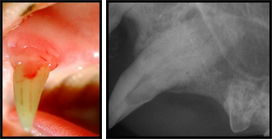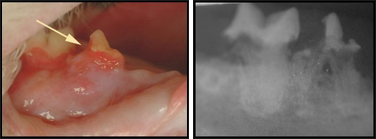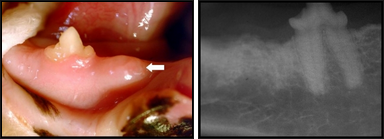Just like the heart or kidneys, a tooth is a major organ in the body. A healthy tooth will react to daily use by remodeling and repairing itself with special cells called odontoblasts (tooth builders) and odontoclasts (tooth demolishers). A common problem occurs in cats when the odontoclasts outnumber or work harder than the odontoblasts.
Tooth resorption, also known as feline odontoclastic resorptive lesions, neck lesions or cat cavities, occurs in about a third of all young cats. It increases in prevalence with age. Usually, when a cat has one tooth that is resorbing, more will be found on closer inspection.
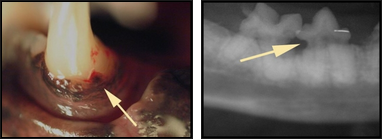
Tooth resorption starts off a “hidden” sore spot on the tooth close to gum line. First the lesion is very shallow. During this time, a cat may not show any signs of a problem.
How do we know when a cat is in pain?
Cats are naturally very good at hiding their problems. Some subtle signs of pain include:
- inappropriate elimination,
- sudden aggression or anti-social behavior with other pets and people,
- decreased grooming habits,
- “messy” eating habits- dropping food, moving food to the water bowl, running away from the bowl, head shaking while eating
grinding teeth
Treatment of tooth resorption starts with being able to detect when it is present.
The lesion can be detected by one or all of the following:
- Physical examination- with or without sedation
- Probing with a sharp dental instrument
- Dental radiographs
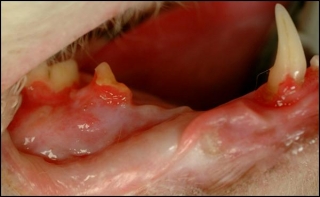
Physical examination is all that is needed to detect tooth resorption on multiple teeth in this cat.
Surgical extraction of the entire tooth is the treatment of choice for most.
Sometimes, the root of the tooth becomes very similar to bone. These teeth cannot be completely removed without damaging the jaw. In these cases, intentional root retention is performed.
This should not be done when there is:
- Periodontal disease (infection of the gums)
- Stomatitis (whole mouth inflammation)
- Osteomyelitis (inflammation of bone due to infection)
- Systemic disease (diabetes, heart disease etc.)
- No dental radiograph to confirm that the root cannot be extracted
Sometimes, the resorption is very deep along the root in a senior cat. In these cases, conservative treatment with regular physical examinations and dental radiographs is best.
Since the holes in the teeth are not caused by tooth decay, treating them like true cavities is not appropriate.
There is no way to prevent tooth resorption because we do not clearly know what causes it to happen. Close monitoring for subtle signs of pain, twice annual physical examinations, professional dental cleanings and dental radiographs are the key to early detection and treatment.

